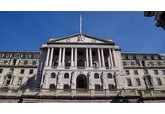
US Economy Will Only Get Murkier If Key Data Is Delayed in Shutdown
Lawmakers are careening toward a shutdown of the federal government that could deprive policymakers, business leaders and investors of critical data they need to assess the state of the US economy.
Many federal operations will pause and nonessential employees will be furloughed or fired if lawmakers can’t reach an agreement by the time the current fiscal year ends on Tuesday. Per the latest guidelines, the Bureau of Labor Statistics — responsible for a number of gold-standard US economic releases — would cease operations and likely delay Friday’s payroll report in the event of a shutdown.
Given uncertainty about the impact President Donald Trump’s policies are having on the US economy, federal gauges of employment, inflation and spending are all the more important. Any postponement could hamper key policy decisions, such as whether the Federal Reserve should cut interest rates again when it meets next month.
“You don’t want to be flying blind in a foggy environment,” said Gregory Daco, chief economist at EY-Parthenon.
Should the government shut down after Sept. 30, the first major release poised to be affected is the BLS employment report, scheduled for Oct. 3. The agency’s marquee report on inflation — the consumer price index — would be the next big one on the docket, while reports on retail sales and new residential construction from the Census Bureau are also at risk of being delayed.
Fed officials cut interest rates at their September meeting for the first time this year largely based on evidence of a cooler labor market, and policymakers are keenly watching for any signs of further deterioration.
The Department of Labor, which oversees the BLS, released updated guidelines that confirmed the statistical agency would suspend all operations and cease data collection during a lapse in appropriations. The guidelines say scheduled economic data will not be released during a shutdown.
While the plan estimates that it would take half a day for the department as a whole to complete shutdown activities, it says tasks related to backing up systems may take up to three days for the BLS.
Read More: Here’s What Happens When the US Government Shuts Down
The BLS had to delay publication of the jobs report and CPI when the government was shut down in 2013. There was a shutdown more recently in 2018-2019, but prior funding ensured that BLS could release major data as planned.
There are third-party economic data that, while generally considered not as comprehensive as government data, will still be available. They include measures of private payrolls from ADP Research and existing-home sales from the National Association of Realtors.
The Fed next meets on Oct. 28-29, and it would be harder to justify another interest-rate cut without having the latest government numbers, said Stephen Stanley, chief US economist at Santander US Capital Markets. Some officials are already wary of doing so and want to see more data.
“There’s private data and Fed officials can canvas their contacts and at least get a sense of what’s going on, but it does get tougher if you don’t have the big aggregate data that we tend to depend on,” Stanley said.
A government shutdown isn’t going to push the US economy into a recession, but it will have a cost and add to the uncertainty that companies and business leaders are already dealing with, said Neil Bradley, chief policy officer at the US Chamber of Commerce.
“By playing this fight out, let’s understand that we’re undermining the economy and that we’re dampening growth by raising uncertainty,” Bradley said on a Sept. 23 webinar.
bloomderg.com







